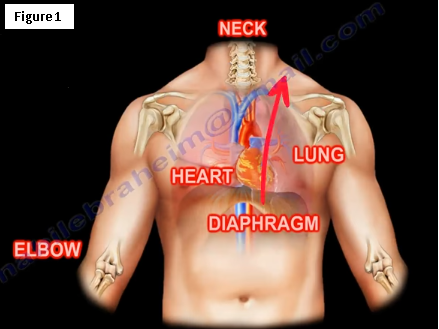
Shoulder pain is common. The presence of pain around the shoulder does not always mean it is a shoulder problem. Pain can come from the structures inside the shoulder or from the structures outside the shoulder. The pain could be referred pain from neck problems (cervical spine pathology) or from other distant sites such as the elbow, heart, lungs, and diaphragm (Figure 1). Elbow pain is rarely transmitted to the shoulder. The shoulder is a common area for referred pain and examination of the shoulder should include examination of these other areas.
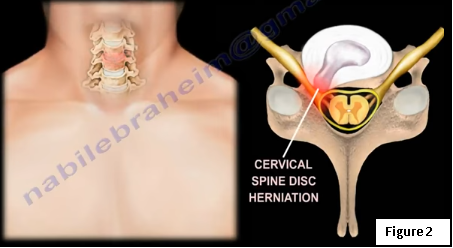
One of these areas that can cause pain referred to the shoulder is the neck, such as a herniated cervical disc or other cervical spine pathology (Figure 2). The muscles and the nerves that arise from the neck area will pass through and around the shoulder on their way down the arm. The pain may radiate to the shoulder or scapula. The pain is usually at the superomedial aspect of the scapula. The pain originating from the neck region may overlap the shoulder. Usually, pain in the neck is felt on top of the shoulder, over the area of the trapezius muscle. Pain from the shoulder itself is usually felt at the top of the arm. If the shoulder moves freely without pain, then the neck is probably the source of the pain.
Sometimes, these conditions are confusing and difficult to differentiate (they usually overlap), especially when neck related shoulder pain causes weakness of the rotator cuff muscles, the shoulder to become stiff, or shoulder impingement. Pain arising from the acromioclavicular (AC) joint can radiate into the neck itself. Sometimes, an MRI is the only accurate study that helps in differentiating between neck pain and shoulder pain.
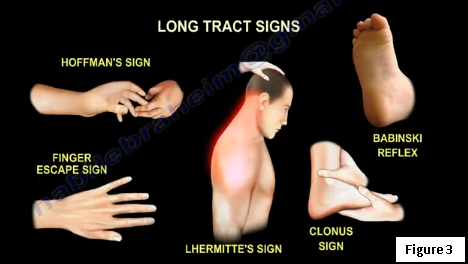
When cervical spine problems are suspected, the physician should examine the patient for findings of gait disturbance and long tract signs (Figure 3) which will indicate that the patient may have cervical myelopathy. This is a more serious problem due to spinal cord compression. A positive Spurling’s Test will indicate neck pathology, especially nerve root irritation, and possibly a herniated disc. A positive shoulder abduction test usually indicates neck pathology. The patient’s symptoms are relieved by shoulder abduction, by placing the hand over the head.
Heart problems such as myocardial infarction or angina may cause pain radiating to the left shoulder. Irritation of the diaphragm may present itself as shoulder pain. The diaphragm may share the same C4-C5 nerve root innervation.
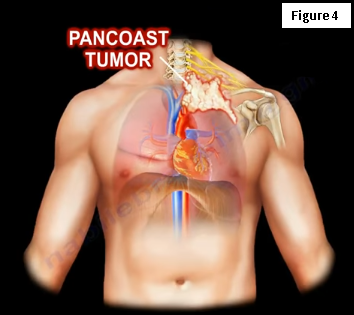
The chest and upper abdomen should be carefully examined for possible pathology. A Pancoast tumor is another condition which causes referred pain in the shoulder region. A Pancoast tumor is a type of lung cancer that forms at the very top of the lung. This tumor may invade the brachial plexus, the ribs, the vertebral bodies, the pleura, and the chest wall, causing shoulder pain (Figure 4).
Sometimes, spine fractures may present as shoulder pain. The fracture may irritate the rhomboid muscles and transmit the pain to the scapula. The image below (Figure 5) illustrates some of the referred pain patterns in the region of the shoulders and neck.
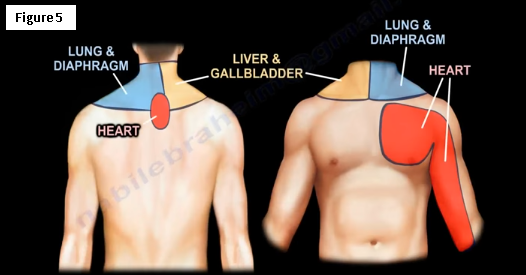
For more information about shoulders, follow the links below:
For more information on Orthopaedic conditions, visit my Youtube channel:
